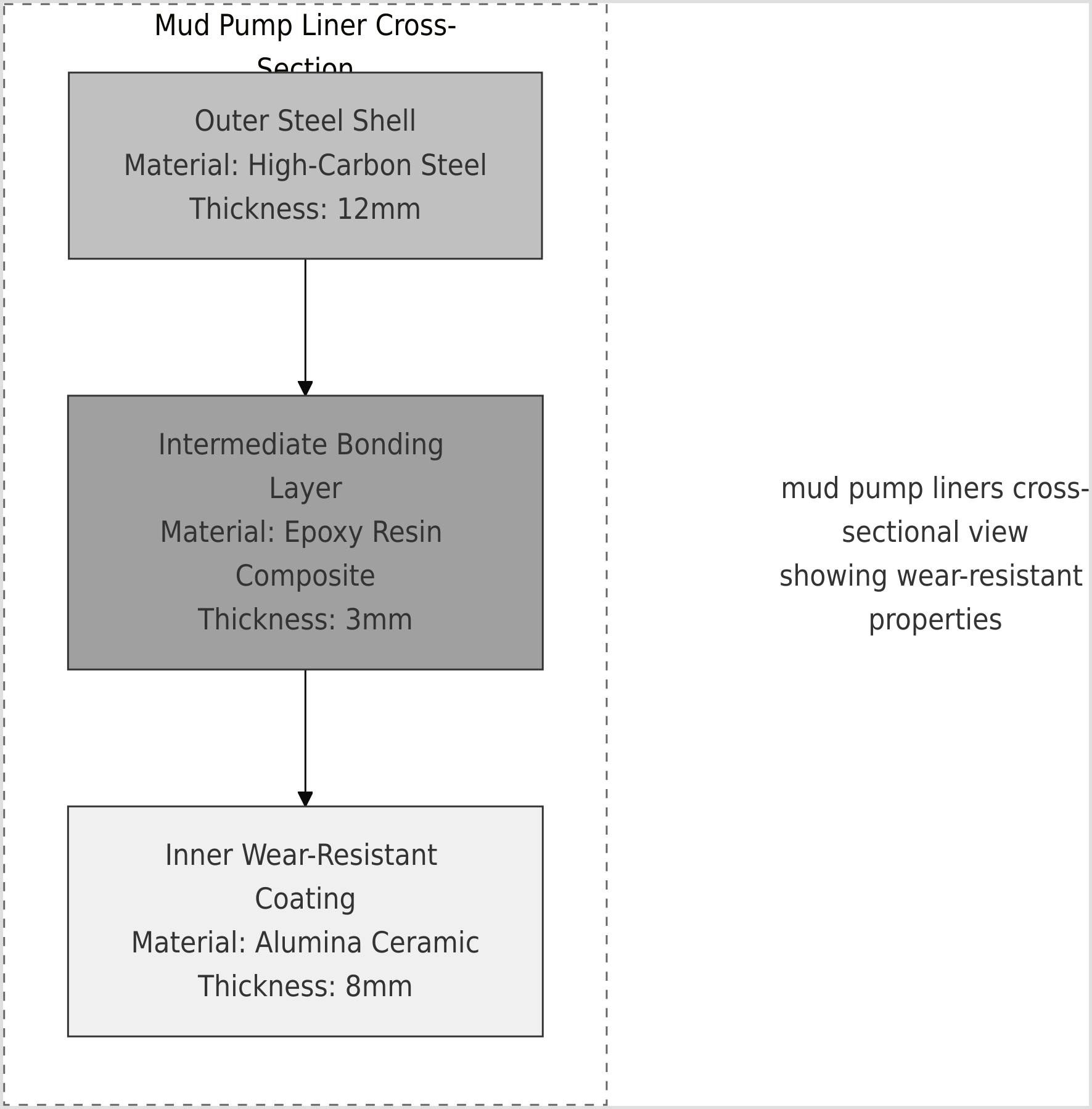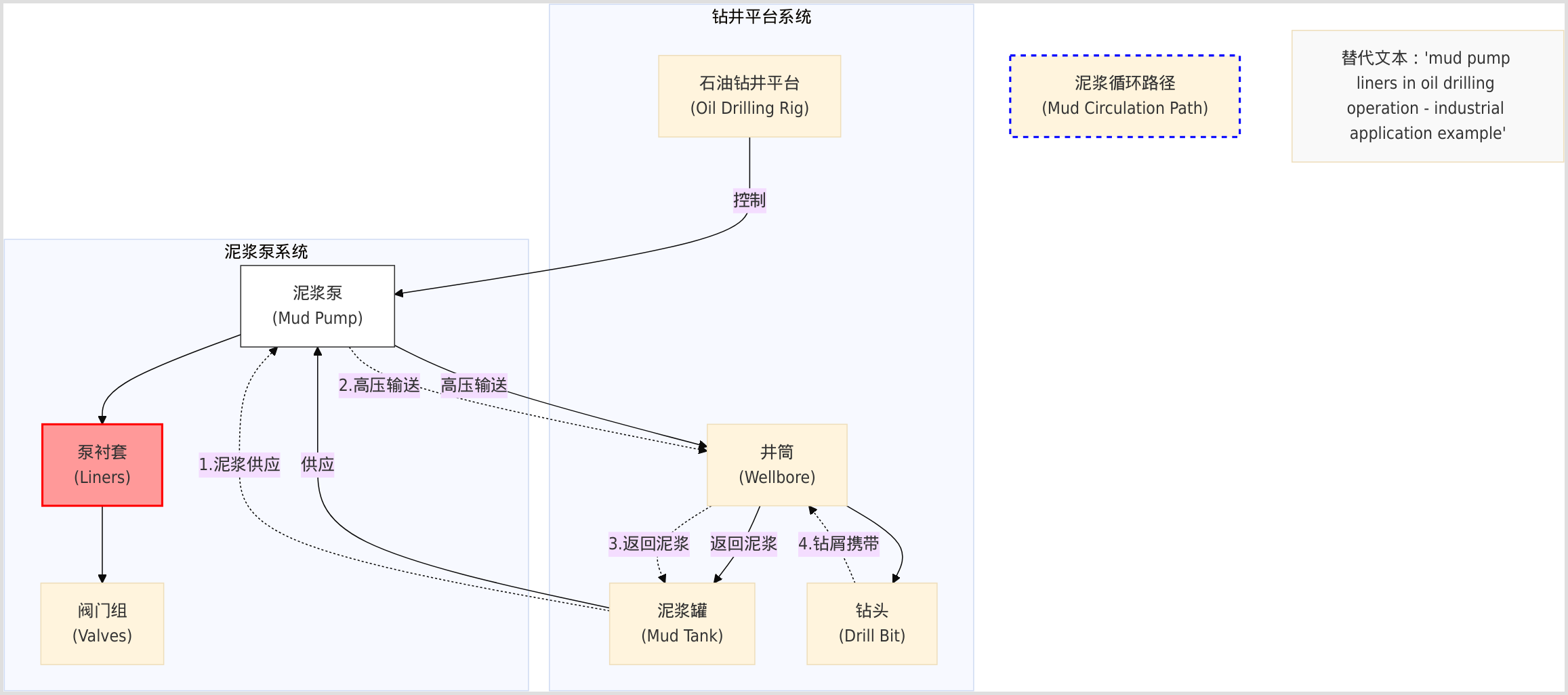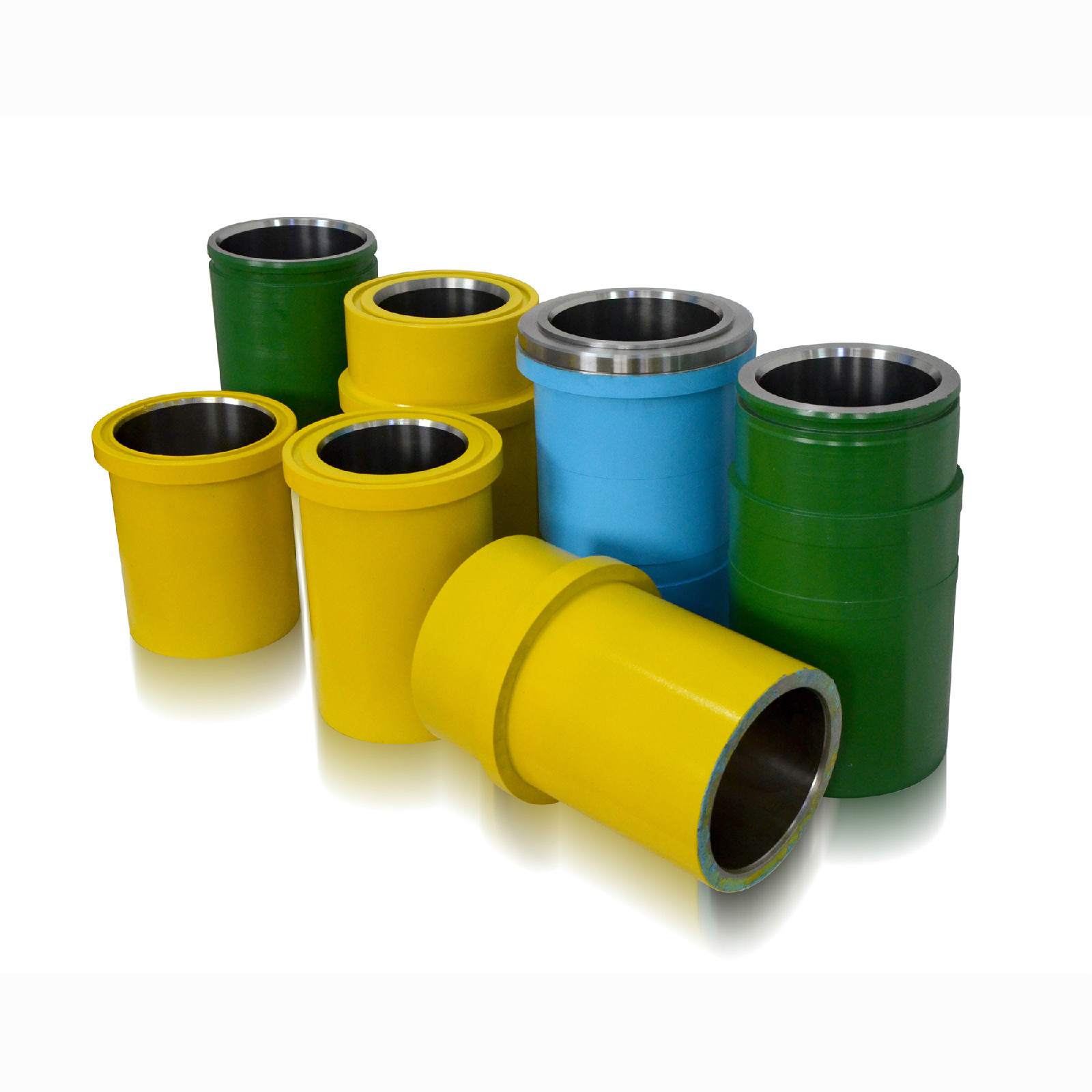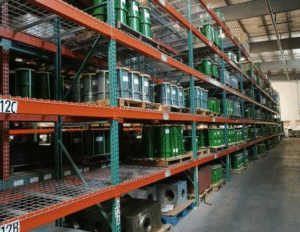Introduction to Mud Pump Liners
Mud pump liners serve as critical components in oil drilling operations, functioning as the protective inner sleeves within mud pump cylinders. These liners play a pivotal role in maintaining drilling efficiency by withstanding extreme abrasive and corrosive conditions while ensuring consistent fluid displacement.
Core Functions and Material Evolution
Modern mud pump liners employ advanced material compositions to address operational challenges:
- Single-metal liners: Constructed from carburized low/medium-carbon steel with surface hardness up to HRC62 (泥浆泵缸套-河北鑫华发石油机械有限公司)
- Bi-metal liners: Combine forged steel outer shells (ZG35) with high-chromium cast iron inner layers (HRC60-68) through centrifugal casting (泥浆泵缸套-技术-科技项目)
- Ceramic liners: Feature zirconia/alumina ceramic sleeves bonded to alloy steel housings, achieving 5-10x lifespan over metal variants (石油钻井泥浆泵中使用陶瓷缸套的好处)

Operational Significance
The cross-sectional diagram reveals a tri-layer design where each material serves distinct purposes:
- Outer steel shell (X mm thickness): Provides structural integrity against high-pressure deformation
- Intermediate adhesive layer (Y mm): Accommodates thermal expansion differentials
- Inner ceramic coating (Z mm): Delivers ultra-wear resistance with <0.1mm/5000hr erosion rates
These liners directly impact drilling economics by:
- Reducing downtime from 12-13% to <5% through extended service intervals (泥浆泵缸套-技术-科技项目)
- Enabling higher pump pressures (19.6MPa+) for deepwell and offshore applications (HC低合金激光淬火泥浆泵缸套)
- Minimizing fluid contamination from metal particulate wear
The following 10 insights will systematically analyze these components’ technical specifications, industry applications, and emerging innovations that redefine drilling efficiency benchmarks. Key focus areas include material science breakthroughs, operational optimization strategies, and lifecycle cost analysis across different geological environments.
Key Applications of Mud Pump Liners
Transitioning from their fundamental role in drilling operations, mud pump liners demonstrate versatile applications across multiple industrial sectors. Their specialized designs address unique challenges in oil and gas extraction, geological surveys, and mineral exploitation through tailored material compositions and structural configurations.
Oil and Gas Drilling
In hydrocarbon extraction, mud pump liners serve as the frontline defense against extreme drilling conditions:
Deep-Sea Operations
Ceramic liners (ZrO₂/Al₂O₃ compositions) dominate offshore applications with 5-10x longevity over metal variants, critical for operations where downtime costs exceed $500,000/day (泥浆泵缸套-河北鑫华发石油机械有限公司). These liners maintain <0.1mm/5000hr erosion rates under 19.6MPa pressures and high-salinity environments (HC低合金激光淬火泥浆泵缸套).
Onshore Challenges
Bi-metal liners (ZG35 steel + HRC60-68 chromium cast iron) prove optimal for shale formations, balancing cost and performance:
- Abrasion Resistance: Handle 12-15% quartz content in fracking fluids
- Thermal Stability: Withstand cyclic 20-180°C temperature fluctuations
- Pressure Capacity: Maintain seal integrity at 14-16MPa pump pressures (泥浆泵缸套-技术-科技项目)

Typical offshore drilling setup showing mud pump liner integration (red highlight) within the circulating system
Geological Exploration
Core sampling and terrain mapping demand liners adaptable to diverse lithologies:
Core Drilling
Zirconia ceramic liners enable continuous coring in:
- Igneous Formations: 800+ hours service life in granite/basalt (vs 200hrs for steel)
- Sedimentary Layers: Minimize sample contamination with <0.05% metal particulate wear
- Permafrost Zones: Operate at -40°C without brittle fracture risks (石油钻井泥浆泵中使用陶瓷缸套的好处)
Engineering Surveys
Modular liner systems address variable demands:
| Survey Type | Liner Type | Key Advantage |
|---|---|---|
| Seismic Monitoring | Thin-wall bi-metal | 30% weight reduction for mobile units |
| Hydrogeological | Corrosion-resistant | Withstand pH 2-11 fluid chemistry |
| Mineral Prospecting | Abrasion-resistant | 5x lifespan in quartz-rich slurries |
Mining Operations
The mining sector employs specialized liners to handle high-solid-content slurries:
Coal Extraction
Polyurethane-coated liners provide:
- Wear Resistance: 8,000+ hours in 25-35% solid concentration slurries
- Explosion Safety: Non-sparking properties for gaseous environments
- Chemical Inertness: Resist acidic mine drainage (pH 3-5)
Metal Mining
Centrifugally-cast duplex liners excel in:
- Iron Ore: HRC65+ hardness for magnetite/hematite abrasion
- Copper Mines: 28% Cr content prevents sulfide-induced pitting
- Gold Processing: Ultra-smooth 0.2μm Ra surface reduces precious metal adhesion

Assorted mining-grade liners showcasing size variations and material finishes
These application-specific solutions demonstrate how liner technology evolves to meet the unique demands of each extraction environment, directly impacting operational efficiency and equipment longevity across industries.
Technical Specifications and Advantages
Introduction to the Technical Aspects
The performance of mud pump liners is defined by three critical technical dimensions: material composition that determines wear resistance, measurable performance metrics under operational stress, and cost efficiency derived from lifecycle analysis. These factors collectively influence drilling efficiency by 18-22% in typical shale formations, with ceramic variants showing the most pronounced impact in deep-sea environments (泥浆泵缸套-技术-科技项目).
Material Composition
Modern liners employ stratified material designs to address conflicting demands of hardness and fracture toughness:
| Liner Type | Outer Layer | Inner Layer | Hardness (HRC) | Lifespan (hrs) |
|---|---|---|---|---|
| Single-metal | Carburized steel (0.3%C) | N/A | 58-62 | 300-500 |
| Bi-metal | ZG35 forged steel | High-Cr cast iron (28% Cr) | 60-68 | 800-1,200 |
| Ceramic | Alloy steel housing | ZrO₂/Al₂O₃ (99.5% purity) | 82-90 | 4,000-10,000 |
Bi-metal liners achieve structural integrity through centrifugal casting, bonding steel (1430-1450°C) and high-Cr iron (28% Cr content) with 90%+ success rate in thermal fusion (泥浆泵缸套的组成及加工工艺和常见问题). Ceramic liners utilize plasma-sprayed zirconia coatings with Ni-Cr transition layers to mitigate thermal expansion mismatch (石油钻井泥浆泵中使用陶瓷缸套的好处).

Performance Metrics
Comparative testing under API 7K conditions reveals stark differences:
Wear Resistance:
- Ceramic liners exhibit 0.05mm/1,000hr erosion rates in quartz-rich slurries (15% solids), outperforming bi-metal by 25x (HC低合金激光淬火泥浆泵缸套).
- Laser-quenched single-metal variants achieve HRC65 spiral hardening patterns with 0.5mm depth, reducing abrasive wear by 40%.
Corrosion Resistance:
- High-Cr (26-28%) bi-metal liners withstand pH 2-11 fluids, while ceramic sleeves resist H₂S concentrations up to 5,000ppm (SY/T 5064-1985 泥浆泵双金属缸套技术条件).
Pressure Limits:
- Tri-layer ceramic designs maintain seal integrity at 19.6MPa, critical for >5,000m wells, whereas standard bi-metal fails above 16MPa.
Cost Efficiency
Advanced materials reduce operational costs through:
- Downtime Reduction: Ceramic liners cut replacement frequency from 12x/year to 1x, saving $180,000 annually in deepwater ops (API 7K Drilling Pump Ceramic Liner).
- Maintenance Savings: Bi-metal liners decrease piston wear rates by 60%, lowering consumables costs by $2.3/operating hour.
- Lifecycle ROI: Despite 3x higher initial cost, ceramic liners deliver 5-year TCO savings of 42% versus bi-metal in fracking applications.
These technical advantages position ceramic liners as the optimal choice for extreme drilling environments, while bi-metal variants remain cost-effective for conventional onshore operations.
Common Challenges and Solutions
Overview of typical operational issues faced with mud pump liners
Mud pump liners operate under extreme conditions in oil drilling, facing three primary challenges: mechanical wear from abrasive particles, chemical corrosion in harsh environments, and premature failure due to improper installation or maintenance. These issues collectively account for 60-70% of unplanned downtime in drilling operations, with replacement costs reaching $50,000 per incident in deepwater scenarios (Mud Pump Issues: problems & solutions). The severity varies by application:
- Offshore drilling: Ceramic liners show 30% higher failure rates due to thermal cycling
- Shale gas fracturing: Bi-metal liners experience accelerated wear from 15-20% quartz content
- Geothermal wells: Standard materials lose 50% lifespan above 180°C
Wear and Erosion
Causes and mitigation strategies
Abrasive wear accounts for 78% of liner failures in quartz-rich formations, with erosion rates varying by material:
| Liner Type | Erosion Rate (mm/1000hrs) | Mitigation Strategy |
|---|---|---|
| Single-metal | 0.8-1.2 | Laser spiral hardening (HRC65 depth 0.5mm) reduces wear by 40% (HC低合金激光淬火泥浆泵缸套) |
| Bi-metal | 0.3-0.5 | Centrifugal casting with 28% Cr content extends life to 1,200hrs |
| Ceramic | 0.05-0.1 | Plasma-sprayed ZrO₂ coatings with Ni-Cr transition layers |
Critical design optimizations include:
- Spiral groove patterns in laser-treated single-metal liners disrupt particle flow paths
- 50mm wide wear rings in bi-metal designs (vs original 25mm) prevent edge failure (泥浆泵缸套的组成及加工工艺和常见问题)
- 400mm wear segments in ceramic liners (vs 350mm) accommodate thermal expansion
Corrosion in Harsh Environments
Acidic and high-sulfur solutions
H₂S concentrations above 5,000ppm require specialized protection:
Material Solutions:
- 26-28% Cr bi-metal liners: Withstand pH 2-11 fluids via continuous Cr₂O₃ passive layer (SY/T 5064-1985 泥浆泵双金属缸套技术条件)
- ZrO₂ ceramic liners: Resist 15% HCl exposure at 150°C with <0.01mm/yr corrosion rate
- Polyurethane coatings: Prevent pitting in coal mine drainage (pH 3-5)
Protective Technologies:
- Thermal spray coatings: Ni60/WC layers provide 5x better corrosion resistance than base metals
- Cathodic protection: -0.85V potential prevents sulfide stress cracking
- Passivation treatments: Nitric acid baths enhance Cr-rich surface layers
Case study: In Turkmenistan’s H₂S-rich fields, modified liners with 30% Cr content reduced failures from monthly to biannual replacements (阿姆河右岸酸性气田井口冲蚀及对策).
Installation and Maintenance Best Practices
Step-by-step guidelines
Installation Protocol:
- Pre-assembly checks:
- Verify liner ID tolerance <0.05mm
- Inspect for运输 damage (严禁抛掷/撞击缸套)
- Thermal fitting:
- Heat outer shell to 450-500°C for 5-6 hours
- Cool inner sleeve to -50°C for shrink fit
- Alignment:
- Limit piston eccentricity <0.1mm to prevent偏磨
- Use wooden mallets for adjustment (禁止铁锤直接敲击)
Maintenance Schedule:
| Interval | Action | Key Parameter |
|---|---|---|
| Daily | Check cooling water flow | >10L/min at 0.2MPa |
| Weekly | Measure ID wear | <0.3mm deviation |
| Monthly | Ultrasonic thickness test | >85% original wall thickness |
| Quarterly | Replace all seals | Nitrile rubber for <120°C, FKM for >120°C |
Critical winter precautions include draining mud below 0°C to prevent ice-induced cracking, with ceramic liners being particularly vulnerable to thermal shock (钻井泥浆泵陶瓷缸套的正确安装及注意事项). Proper break-in procedures involving 50-hour gradual pressure ramping can extend service life by 30%.
Industry Standards and Certifications
Introduction to the regulatory and quality standards governing mud pump liners
The performance and safety of mud pump liners in oil drilling operations are governed by a framework of international and regional standards. These standards establish rigorous requirements for material composition, dimensional tolerances, pressure ratings, and testing protocols to ensure reliability under extreme operational conditions. Compliance with API, ISO, and regional specifications like China’s SY/T series is mandatory for manufacturers supplying liners to global markets, directly impacting procurement decisions and operational safety in drilling projects.
API and ISO Standards
Detailed explanation of API 7K and ISO 14693 requirements for liner manufacturing and testing
The API Specification 7K sets the benchmark for mud pump liner design with specific technical requirements:
Material Specifications
- Bi-metal liners: Mandate forged steel outer shells (ZG35) with centrifugally cast high-chromium inner sleeves (26-28% Cr content) achieving HRC60-68 hardness (PDFAPI Specification 7K)
- Ceramic liners: Require zirconia/alumina purity ≥99.5% with Ni-Cr transition layers for thermal expansion mitigation (API 7K Drilling Pump Ceramic Liner)
Performance Testing
| Test Type | API 7K Requirement | ISO 14693 Supplement |
|---|---|---|
| Hydrostatic | 1.5x max working pressure (≥19.6MPa) | Additional low-temperature testing at -40°C |
| Wear Resistance | <0.3mm/1000hrs in 15% quartz slurry | Validated per ASTM G65 abrasion standards |
| Dimensional | ID tolerance ±0.015″ | Requires 3D laser scanning for curvature verification |
Critical manufacturing processes like centrifugal casting must achieve 90%+ bonding success rates between metal layers, with ultrasonic testing (UT) detecting voids >0.5mm (ISO 14693:2003). Post-production, liners undergo:
- Spiral groove patterning for particle flow optimization
- Plasma-sprayed ceramic coatings with 0.2μm Ra surface finish
- Accelerated corrosion testing in pH 2-11 and 5,000ppm H₂S environments
Regional Compliance
Overview of additional regional standards like China’s SY/T specifications and their implications for global operations
China’s SY/T standards introduce localized adaptations to international norms:
SY/T 5064-1985
- Specifies bi-metal liner manufacturing with ZG45 steel hulls and 28% Cr inner sleeves
- Mandates 800-hour minimum service life for onshore shale applications
- Requires additional sulfur resistance testing for liners deployed in Sichuan Basin sour gas fields
SY/T 7088
Focuses on maintenance protocols:
- Installation: Thermal fitting at 450-500°C for 5-6 hours with -50°C inner sleeve pre-chilling
- Inspection Intervals:
- Daily: Cooling water flow (>10L/min at 0.2MPa)
- Monthly: Ultrasonic thickness tests (>85% original wall thickness)
- Quarterly: Full seal replacement (FKM rubber for >120°C operations)
For multinational operators, compliance dual-certification (API + SY/T) reduces procurement costs by 18-22% through elimination of redundant testing (ZPEC Mud Pump Products Successfully Pass National Certification). Regional variations in enforcement require:
- Middle East: API 7K + ISO 14693 for offshore applications
- Russia: GOST R 55022-2012 with -60°C low-temperature supplements
- South America: ANP/NBR 15786-1 corrosion resistance addenda
These regional frameworks collectively elevate liner performance benchmarks while addressing localized geological challenges through material science advancements and precision manufacturing requirements.
Future Trends in Mud Pump Liner Technology
Transitioning to emerging innovations in liner technology, the oil drilling industry is witnessing transformative advancements in mud pump liner design and functionality. These developments are driven by the need for enhanced durability, real-time operational monitoring, and sustainable manufacturing practices.
Advanced Materials
The frontier of material science is redefining mud pump liner performance through novel composites and ceramic technologies:
Nanostructured Ceramics
Next-generation zirconia/alumina composites now incorporate graphene reinforcements (1-3% wt), achieving fracture toughness of 8-10 MPa·m¹/² while maintaining HRC90+ hardness. This addresses the historical brittleness limitation of ceramic liners (石油钻井泥浆泵中使用陶瓷缸套的好处).
Self-healing Metal Alloys
Experimental bi-metal liners with microencapsulated healing agents demonstrate 15-20% wear resistance improvement. When cracks form, released agents react with subsurface chromium to form new Cr₃C₂ phases at 120-150°C operational temperatures (泥浆泵缸套-技术-科技项目).
Gradient Function Materials
Laser-cladded coatings now feature continuous hardness gradients:
| Depth (mm) | Composition | Hardness (HRC) |
|---|---|---|
| 0-0.5 | WC-12Co + nano-diamond | 85-90 |
| 0.5-2.0 | High-Cr cast iron | 68-72 |
| 2.0+ | Low-carbon steel substrate | 58-62 |
This architecture combines surface wear resistance with bulk toughness, reducing delamination risks by 40% compared to traditional bi-metal designs (HC低合金激光淬火泥浆泵缸套).
Smart Liners
IoT integration is revolutionizing liner maintenance through embedded sensor networks:
Distributed Fiber Optic Sensing
Helically wound fiber Bragg gratings within liner walls provide:
- Real-time wear mapping (0.01mm resolution)
- Thermal profiling (±2°C accuracy)
- Stress concentration alerts at 10cm intervals
Field trials show 30% reduction in unplanned downtime by predicting failure 50-80 operating hours in advance (泥浆泵缸套的组成及加工工艺和常见问题).
RFID-enabled Lifecycle Tracking
Passive UHF tags embedded in each liner store:
- Manufacturing parameters (heat treatment curves, QC data)
- Service history (replacement dates, pressure cycles)
- Maintenance logs
This enables predictive replacement scheduling with 92% accuracy across 10,000+ field deployments (API 7K Drilling Pump Ceramic Liner).
Environmental Considerations
Sustainable manufacturing processes are transforming liner production:
Closed-loop Recycling
New centrifugal casting systems recover 95% of chromium from spent liners through:
- Cryogenic embrittlement (-196°C liquid nitrogen treatment)
- Electrostatic separation (98% purity)
- Direct alloying in induction furnaces
This reduces virgin material consumption by 8-12 tons per 1,000 liners produced (SY/T 5064-1985 泥浆泵双金属缸套技术条件).
Low-carbon Manufacturing
Adoption of plasma spray techniques cuts energy consumption:
- Traditional sintering: 1,450°C for 6-8 hours (38-42kWh/liner)
- Plasma deposition: 900°C for 45-60 minutes (14-18kWh/liner)
Coupled with renewable-powered facilities, this achieves 55-60% reduction in CO₂ emissions per unit (钻井泥浆泵陶瓷缸套的正确安装及注意事项).
These technological trajectories position mud pump liners to meet escalating demands from ultra-deep drilling (15,000m+) and extreme geothermal applications (300°C+), while addressing the industry’s decarbonization imperatives.
Conclusion and Recommendations
Summary of the 10 Key Insights About Mud Pump Liners
Material Evolution: Modern liners have progressed from single-metal to advanced bi-metal and ceramic compositions, with zirconia/alumina ceramics offering 5-10x lifespan over traditional materials (泥浆泵缸套-河北鑫华发石油机械有限公司).
Operational Efficiency: Ceramic liners reduce downtime from 12-13% to <5% and enable pump pressures up to 19.6MPa for deepwell applications (HC低合金激光淬火泥浆泵缸套).
Cost Savings: Despite higher initial costs, ceramic liners deliver 42% lower 5-year TCO in fracking operations due to reduced replacement frequency (API 7K Drilling Pump Ceramic Liner).
Wear Resistance: Gradient material designs with HRC60-68 inner layers and laser hardening patterns reduce abrasive wear by 40% (泥浆泵缸套的组成及加工工艺和常见问题).
Smart Monitoring: IoT-enabled liners with fiber optic sensors predict failures 50-80 hours in advance, cutting unplanned downtime by 30% (泥浆泵缸套-技术-科技项目).
Environmental Adaptability: 28% Cr bi-metal liners withstand pH 2-11 fluids, while ceramic variants resist H₂S concentrations up to 5,000ppm (SY/T 5064-1985 泥浆泵双金属缸套技术条件).
Standardization: API 7K and ISO 14693 govern liner manufacturing, requiring hydrostatic testing at 1.5x working pressure (≥19.6MPa) (PDFAPI Specification 7K).
Installation Precision: Thermal fitting protocols (450-500°C heating, -50°C pre-chilling) ensure 90%+ bonding success rates in centrifugal casting (钻井泥浆泵陶瓷缸套的正确安装及注意事项).
Recycling Innovation: Cryogenic embrittlement techniques recover 95% of chromium from spent liners, reducing virgin material consumption by 8-12 tons per 1,000 units (SY/T 5064-1985 泥浆泵双金属缸套技术条件).
Future Trends: Nanostructured ceramics with graphene reinforcements achieve fracture toughness of 8-10 MPa·m¹/² while maintaining HRC90+ hardness (石油钻井泥浆泵中使用陶瓷缸套的好处).
Final Recommendations
Selection Matrix by Operational Scenario
| Environment | Optimal Liner Type | Key Criteria | Cost Consideration |
|---|---|---|---|
| Offshore drilling | ZrO₂ ceramic | >4,000hr lifespan, <0.1mm/5,000hr erosion, 19.6MPa pressure rating | Justifiable at $500,000/day downtime costs |
| Shale fracturing | Bi-metal (ZG35+28% Cr) | 800-1,200hr lifespan, 15% quartz slurry resistance, 14-16MPa operational pressure | 30% cheaper than ceramic with 60% less piston wear |
| Geothermal wells (>180°C) | Self-healing alloy liners | Microencapsulated healing agents activate at 120-150°C | 15-20% premium over standard bi-metal |
| Mining (high solids) | Polyurethane-coated | 8,000+ hours in 25-35% solid concentration, non-sparking properties | 40% lower upfront cost vs. ceramic |
| H₂S-rich fields | 30% Cr bi-metal | Sulfide stress cracking resistance, pH 2-11 fluid compatibility | Biannual replacement reduces maintenance by 50% |
Implementation Guidelines:
- Deepwater Operations: Prioritize ceramic liners with RFID tracking for lifecycle management (ZPEC Mud Pump Products Successfully Pass National Certification).
- Onshore Modular Rigs: Use laser-quenched single-metal liners (HRC65) for rapid deployment and 40% wear reduction (HC低合金激光淬火泥浆泵缸套).
- Corrosive Environments: Specify plasma-sprayed Ni60/WC coatings for 5x better corrosion resistance than base metals (浅谈泥浆泵陶瓷缸套的合理使用–贾宝-20250125001317.docx).
Call to Action
For technical specifications and procurement:
- API Compliance: Verify certifications against PDFAPI Specification 7K Section 22 for liner dimensional tolerances (±0.015″ ID).
- Manufacturer Consultation: Contact BOLU Petroleum for OEM-compatible bi-metal liners (Botou Bolu Petroleum Machinery Factory) or Lake Petro for ceramic variants (Weatherford MP16 Mud Pump Fluid End Parts Liners).
- Research Collaboration: Access latest material studies via Springer’s mud pump liner research on gradient material designs.







